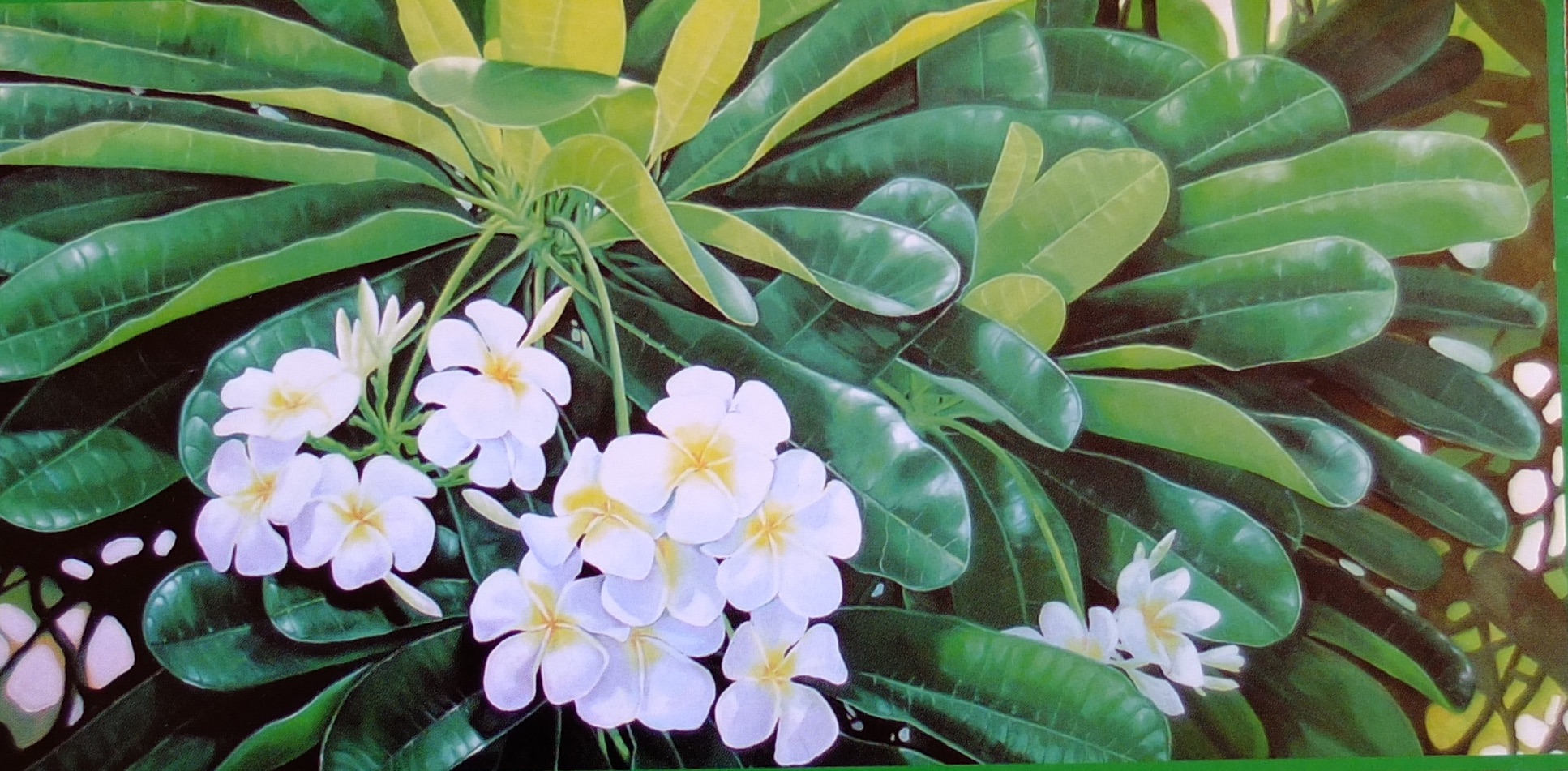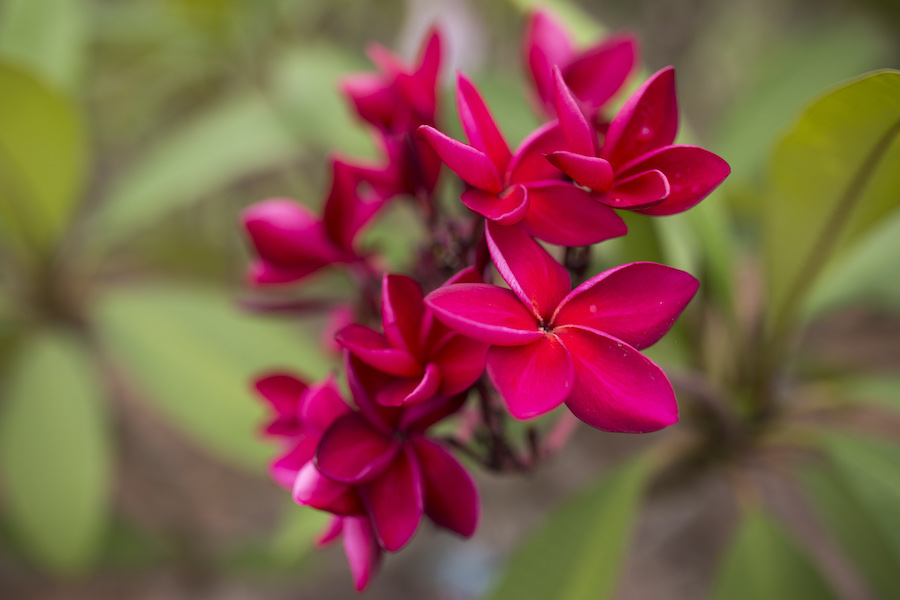A beautiful fragrant flower evokes a complex range of emotions.
The frangipani flower is paradoxical: it is the emblem of the Lao nation but it comes from America, it is white and fragrant often offered to the pagoda but some say to be wary, it is the flower of death but also of love.
Described in the West Indies by Charles Plumier, hence its scientific name Pluméria rubra, it was introduced in India, probably from the 16th century. It was then given the Sanskrit name of campa, which indicated a variety of magnolia, a very fragrant white-flowered tree. In Laotian this name became champa, and the Asian magnolia was named champi.

Tree of Cemeteries
The frangipani, while it seems dead, regenerates itself. Without the least trace of leaf or flower it explodes in new foliage; thus, the tree planted in a cemetery gives hope to relatives of the deceased. In the traditional story Champa Si Ton (“The Four Frangipani Trees”), the trees are reborn from the bodies of four young princes killed by their wicked stepmother; they become invincible, immortal, and they roam about on the water. And because it is the tree of death and immortality the frangipani has a privileged link with the spirits.
Tree of Spirits
In southern Laos we sprinkle phi pop, which are the most dangerous of all wandering spirits, with water scented with frangipani flowers. In Paul Boulanger’s seminal work “A History of French Laos” published in 1930 we read that “On April 19, 1902, around 8 am, the police station of Savannakhet was surrounded by hordes of Laotians … who were walking, singing, and playing the khene, convinced that the bullets from our rifles would change into frangipani flowers.” While in Northern Laos “Plumeria rubra is used by religious leaders to protect the Lahu from evil spirits … The shaman may ask for the use of this plant in love affairs.“
Tree of Love
Frangipani is also the tree of love and even more, the tree of chaste loves.
In the Lao literary tradition it is born of the body of two lovers: “From their ashes, grew a beautiful plant, the champa tree; the discreet and tender perfume of flowers evokes eternal regrets; the whiteness of the petals, the absence of the pistil and the stamens testify the chastity of their great love.”
The name of the frangipani, in Thai lan thom, was chosen as the title of a famous and dramatic soap opera that marked the spirits so much that another name was given to the plumeria: lilawadi. But nothing to be done, the negative image of this tree continues and even influences its Lao neighbors; the frangipani has become in both countries the tree of unhappy love.
Tree of Power
The image of frangipani has evolved in recent decades. It may be thought that the superstitious beliefs of the Thai have awakened ancient images related to legends. Somdi, a young Lao gardener, solves for me the enigma of frangipani. He tells me how his father, against the advice of his neighbors had planted frangipani in his garden which may have resulted in the death of his brother. He thinks that people who have no power, authority, like him or me, should not plant this tree; only those who possess amnat (power) can plant it, that is to say the monks at the pagoda or the king in his palace.


This perception of frangipani is consistent with that of the tree in general in Southeast Asia; the man addresses it, tries to tame it, but it remains, “a dark conscience, a primordial force“. The poet speaks to him as Pierre Nginn does in “Champa, flower of the Lao country” but he knows he will not have answers to his many questions.
“O flowers, precious gift, refuge of symbols,
You who talk to girls about love, about back
To the exile; you who live in the parables,
You who provide the wat with human oboles,
You who die and are born every day;
Since when do you reign on this ancient land?”
Note: A great place to learn more about frangipanis is at Pha Tad Ke Botanical Garden in Luang Prabang (pha-tad-ke.com)
Text and photographs by BIBA VILAYLECK



 ລາວ
ລາວ
